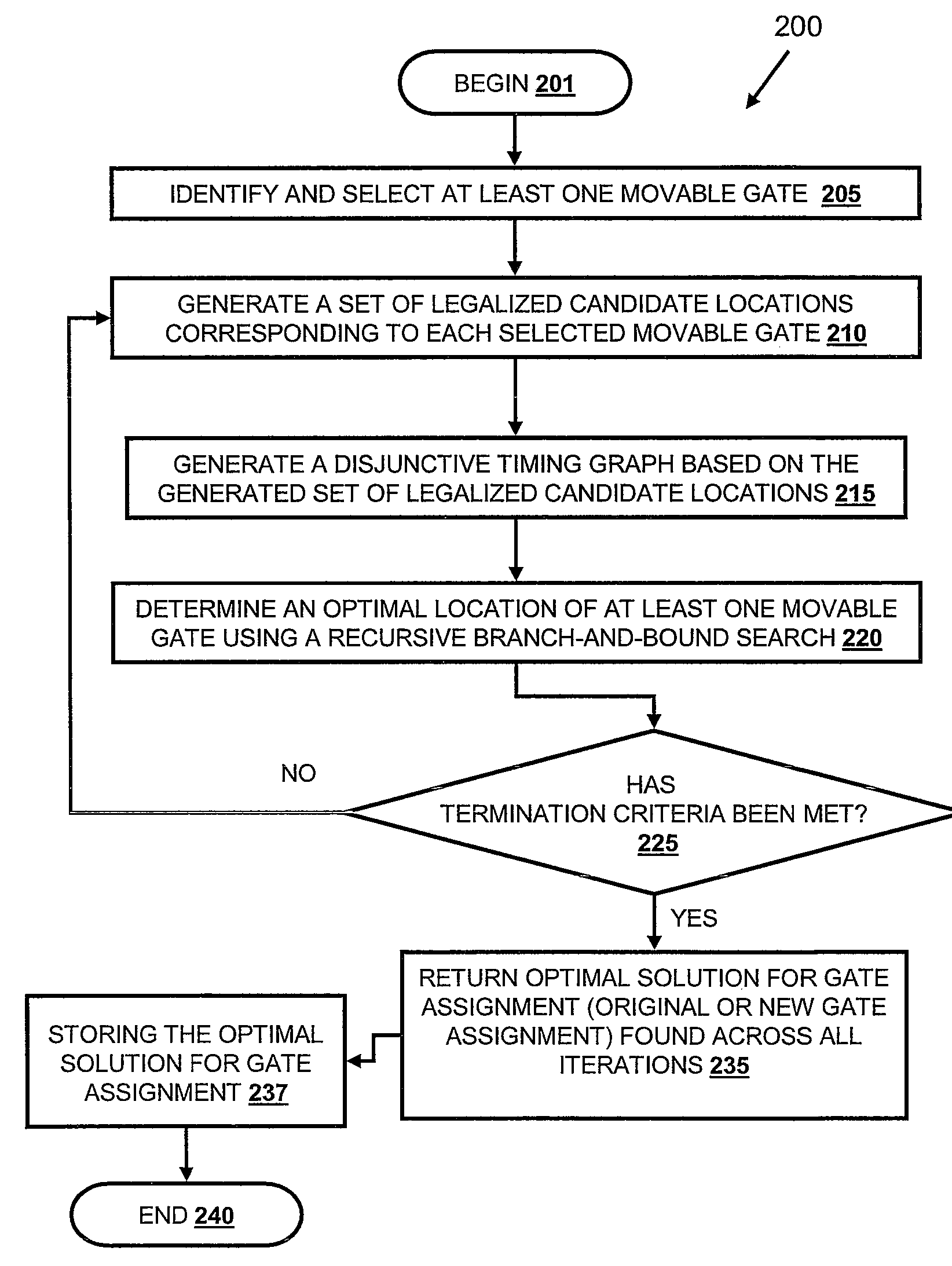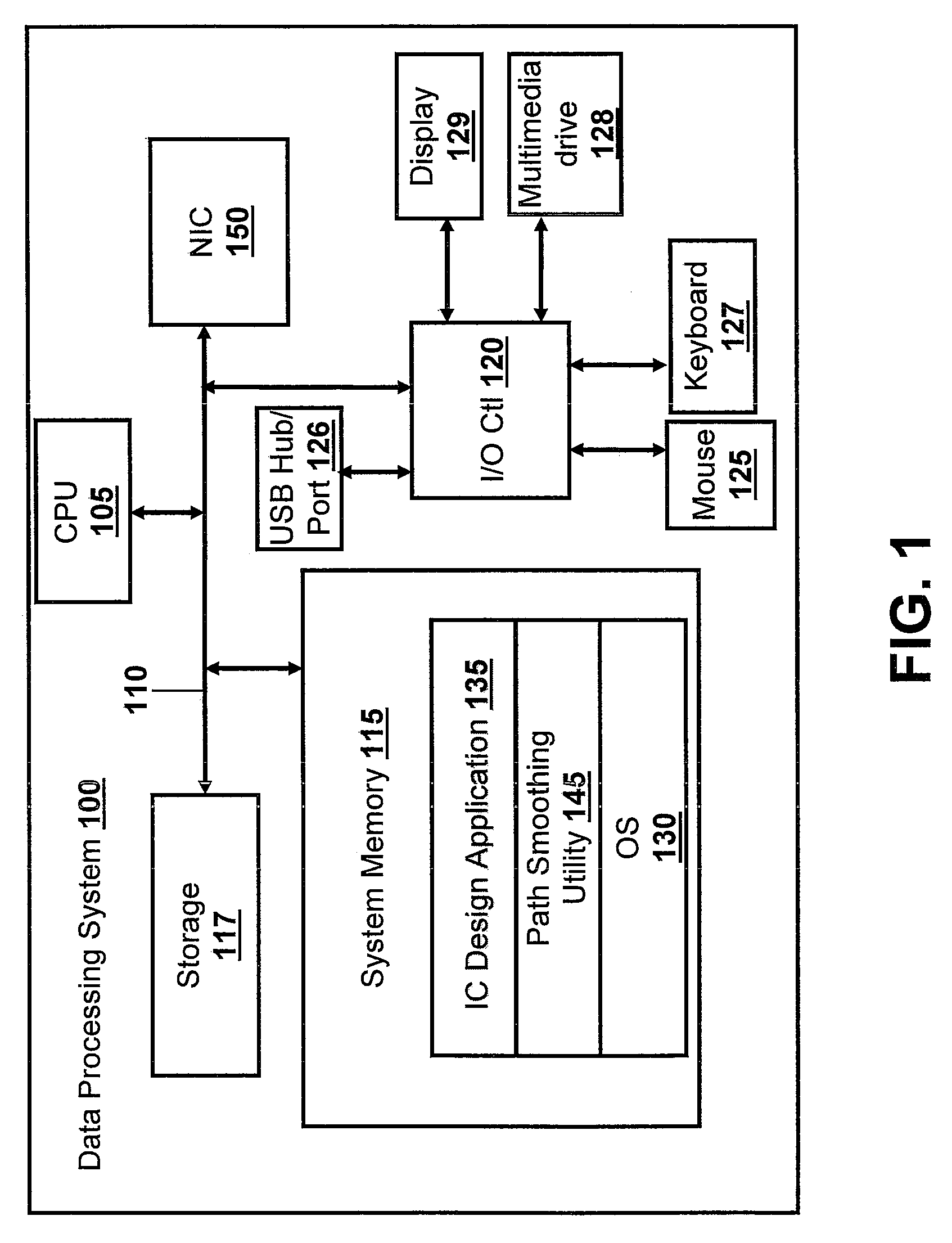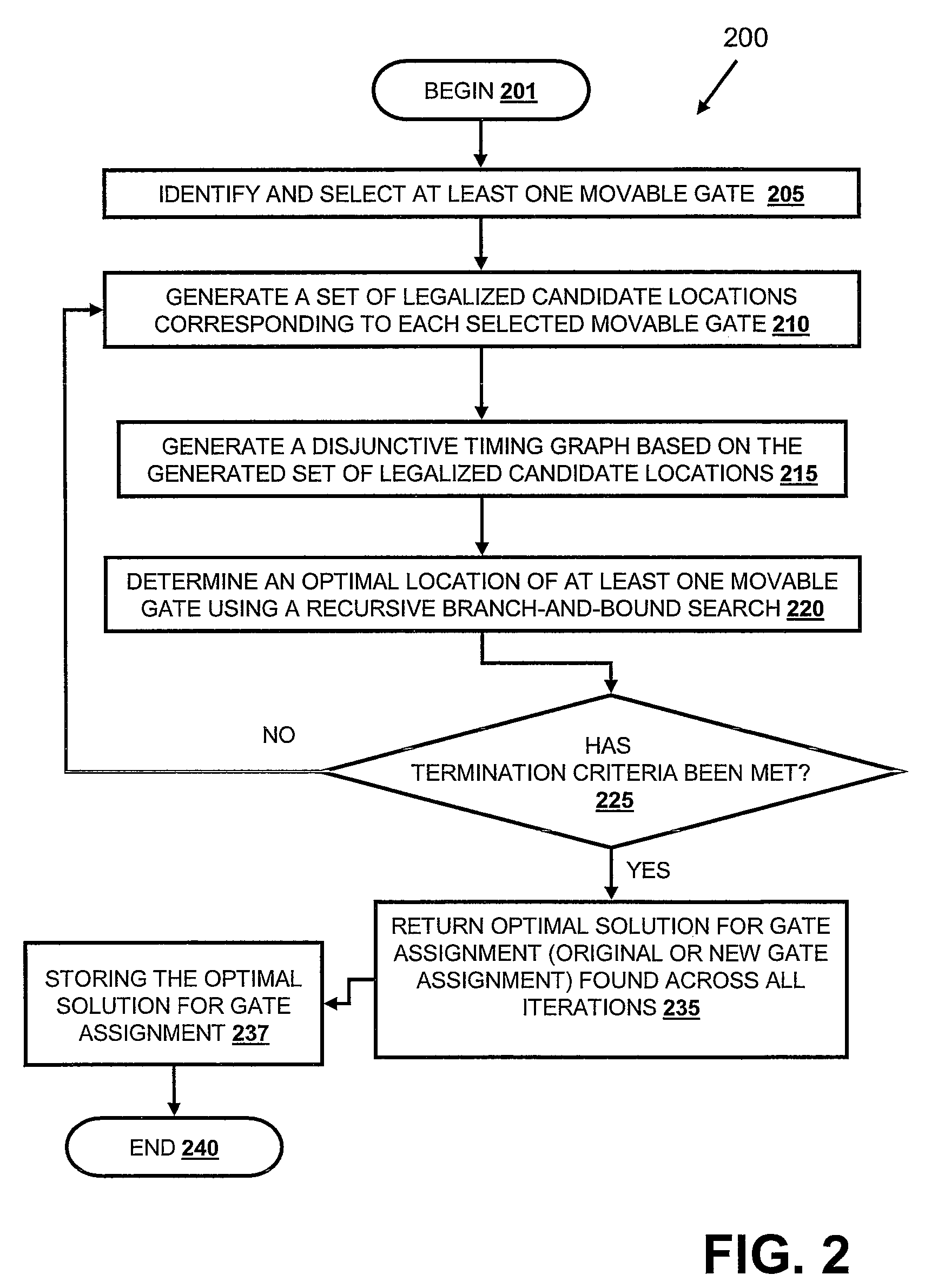Method for Incremental, Timing-Driven, Physical-Synthesis Using Discrete Optimization
- Summary
- Abstract
- Description
- Claims
- Application Information
AI Technical Summary
Benefits of technology
Problems solved by technology
Method used
Image
Examples
Embodiment Construction
[0007]Disclosed are a method, system, and computer program product for optimizing a timing-driven placement of one or more movable gates of a circuit in a physical synthesis flow using a non-linear delay model. A path smoothing utility is provided, which executes on a processing device / computer to: (a) identify one or more movable gates based on at least one selection criteria; (b) generate a set of legalized candidate locations corresponding to one or more identified movable gates; (c) generate a disjunctive timing graph based on the generated set of legalized candidate locations; (d) determine an optimal location of one or more movable gate(s) using a recursive branch-and-bound search; and (e) store the optimal location in the processing device / computer. According to one embodiment, in addition to gate placement, the disjunctive timing graph permits additional discrete transforms that are associated with a plurality of optimization variables. Such optimization variables include, b...
PUM
 Login to View More
Login to View More Abstract
Description
Claims
Application Information
 Login to View More
Login to View More - R&D
- Intellectual Property
- Life Sciences
- Materials
- Tech Scout
- Unparalleled Data Quality
- Higher Quality Content
- 60% Fewer Hallucinations
Browse by: Latest US Patents, China's latest patents, Technical Efficacy Thesaurus, Application Domain, Technology Topic, Popular Technical Reports.
© 2025 PatSnap. All rights reserved.Legal|Privacy policy|Modern Slavery Act Transparency Statement|Sitemap|About US| Contact US: help@patsnap.com



